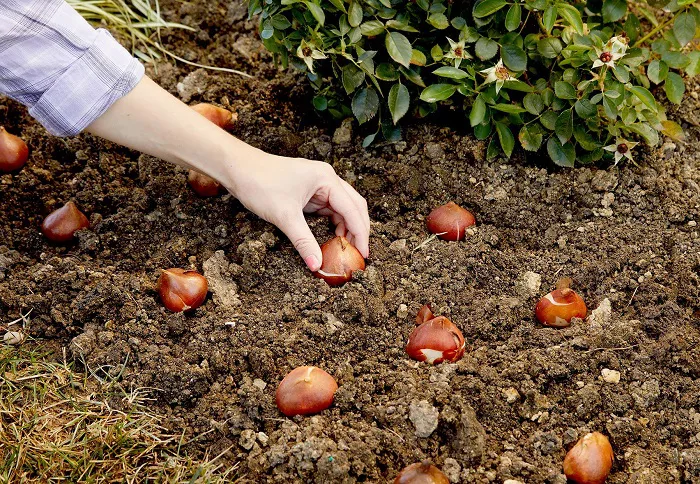Tulips are a beloved addition to any garden, with their vibrant colors and elegant shapes. Many gardeners wonder if tulip bulbs multiply and how to make the most of these beautiful flowers. In this article, we will explore the fascinating world of tulip bulbs, their natural growth patterns, and practical tips for maximizing their multiplication in your garden.
The Natural Life Cycle of Tulip Bulbs
Tulip bulbs are underground storage organs that contain all the nutrients and genetic information needed for the plant to grow and bloom. In their natural habitat, tulips grow in the wild in regions with harsh winters and dry summers. The bulbs go through a period of dormancy during the summer heat and then sprout in the fall when the soil cools down. Over the winter, the roots develop, and by spring, the tulips burst into bloom.
When it comes to multiplication, tulip bulbs have a few ways to increase their numbers. The most common method is through the production of offsets. Offsets are small bulbs that form around the base of the parent bulb. These baby bulbs gradually grow larger each year and eventually develop into flowering plants. This process can take a few years, but with proper care, you can see your tulip patch expand over time.
Another way tulip bulbs multiply is through seed production. After the flowers fade, the plant forms seed pods. These seeds can be collected and sown to grow new tulips. However, growing tulips from seeds is a long-term project. It can take up to five or six years for a seed to develop into a mature, flowering plant. Additionally, tulips grown from seeds may not always resemble the parent plant, as genetic variation can occur.
Do Tulip Bulbs Multiply?
Several factors influence how well tulip bulbs multiply in your garden. Soil conditions play a crucial role. Tulips prefer well-drained soil that is not too heavy or clay-like. If the soil is too wet, the bulbs can rot, and if it is too dense, the offsets may struggle to grow. Adding organic matter, such as compost or well-rotted manure, can improve soil structure and drainage.
Sunlight is another important factor. Tulips need plenty of sunlight to grow and multiply. They should receive at least six hours of direct sunlight per day. If your garden is shaded, the bulbs may not produce as many offsets or may grow weak and spindly.
Temperature also affects bulb multiplication. Tulips require a period of cold dormancy to trigger their growth cycle. In regions with mild winters, it may be necessary to pre-chill the bulbs in the refrigerator for about six to eight weeks before planting. This mimics the natural winter conditions and helps the bulbs to develop strong roots and healthy offsets.
Planting and Care Tips for Maximum Multiplication
To encourage your tulip bulbs to multiply, start with healthy bulbs. Look for bulbs that are firm and free of blemishes or mold. Plant them in the fall, about six to eight weeks before the ground freezes. Dig a hole that is about three times as deep as the bulb is tall. For example, if the bulb is two inches tall, plant it six inches deep. Space the bulbs about four to six inches apart to give them room to grow and produce offsets.
After planting, water the bulbs well to settle the soil. In the spring, when the tulips start to grow, apply a balanced fertilizer to provide the nutrients they need. Avoid overwatering, as this can lead to bulb rot. Once the flowers have faded, do not cut back the foliage. Allow the leaves to die back naturally, as they are still providing energy to the bulb and its offsets.
Dealing with Common Challenges
One of the challenges gardeners face with tulip bulbs is that some varieties are not as reliable at multiplying as others. Hybrid tulips, which are bred for their showy blooms, often have a shorter lifespan and may not produce as many offsets. Species tulips, on the other hand, are more likely to naturalize and multiply in the garden. If you want a self-sustaining tulip display, consider planting species tulips such as Tulipa tarda or Tulipa humilis.
Pests and diseases can also hinder bulb multiplication. Squirrels and other rodents may dig up and eat the bulbs. To protect your tulips, you can place a layer of chicken wire over the planting area or use repellents. Fungal diseases, such as tulip fire, can weaken the bulbs and reduce their ability to produce offsets. To prevent diseases, ensure good air circulation around the plants and avoid overhead watering.
When to Lift and Divide Tulip Bulbs
If you notice that your tulip bulbs are becoming crowded and not producing as many flowers, it may be time to lift and divide them. This is best done in the fall, after the foliage has died back but before the ground freezes. Carefully dig up the bulbs, being sure not to damage the offsets. Separate the offsets from the parent bulb and replant them in fresh soil, spacing them out to give them room to grow.
When dividing bulbs, it is a good opportunity to improve the soil conditions. Add compost or other organic matter to the planting area to provide nutrients and improve drainage. This will give the bulbs a healthy start and encourage them to multiply more effectively.
Conclusion
Tulip bulbs can multiply through the production of offsets and seeds. By understanding their natural growth patterns and providing the right conditions, you can help your tulips to thrive and expand in your garden. Proper planting, care, and attention to soil, sunlight, and temperature will maximize bulb multiplication. While some challenges may arise, such as pest problems or hybrid tulips that do not multiply as readily, with the right knowledge and techniques, you can enjoy a beautiful and ever-expanding display of tulips year after year.


